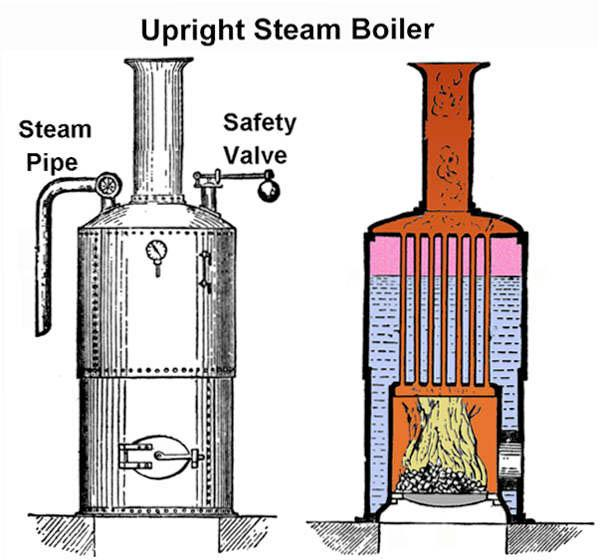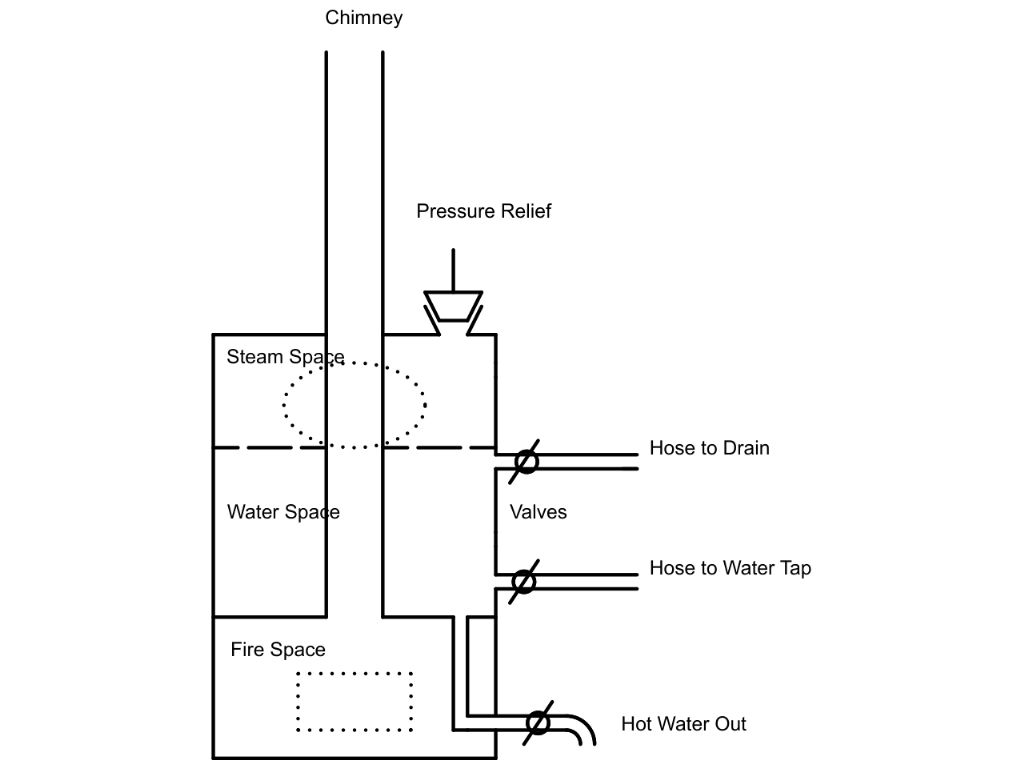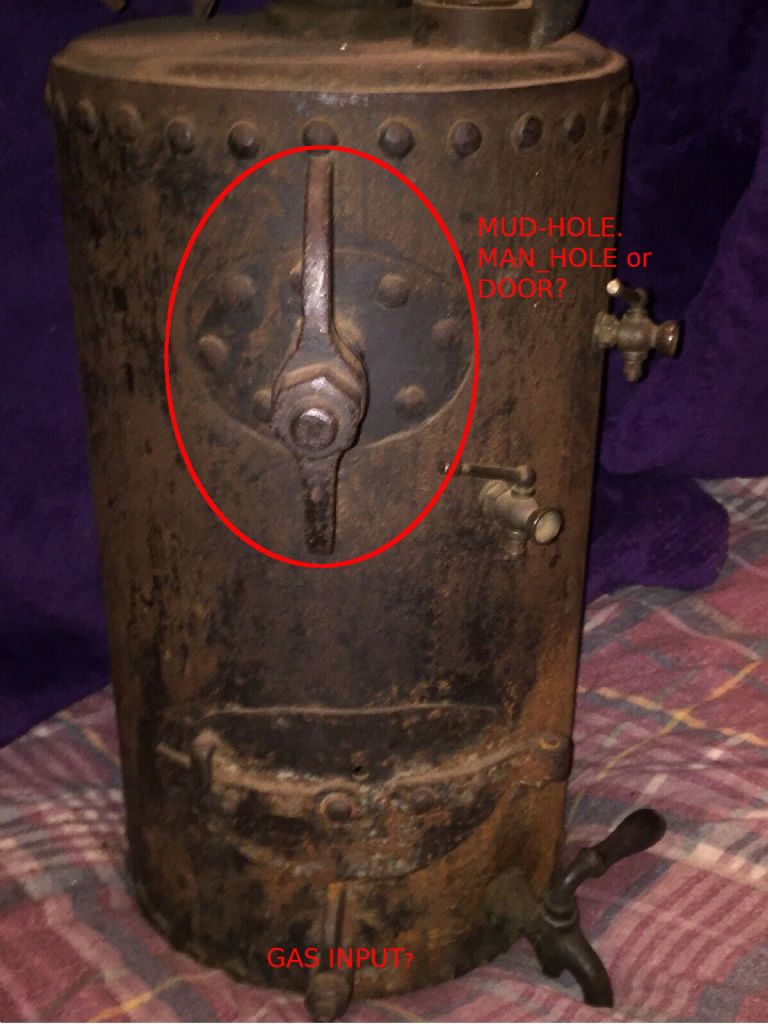Can Anyone Help Me to Identify This Very Old Boiler Please?
I have an antique boiler I know nothing about - appeal for information
| JasonB | 16/08/2019 08:50:37 |
25215 forum posts 3105 photos 1 articles | Thanks, missed that. Though under the thread title it says "I have an antique boiler........"?? Could be an old listing and hattie can't take or upload new photos. Edited By JasonB on 16/08/2019 08:56:52 |
| Hattie Goodale | 16/08/2019 12:00:33 |
| 4 forum posts | Hello all
Thank you very much indeed for your input. Some very interesting food for thought here. I'm not really super keen to sell this item. My partner was a hoarder of antiques and curio; he passed away recently and I've inherited a huge amount of stuff. I love the stuff - it's all interesting and unique like he was, and if I had the choice I'd keep it all. But I will soon have to move out of the house we shared, so some things just have to go. I am in the UK, here is the link to my eBay listing: **LINK** Jason, am I right in understanding you believe the outer wall to be hollow, and that that's where the water goes? This is very interesting, had not even occurred to me as a possibility, and will require an edit to my eBay listing which states that it's solid cast iron. I have been scratching my head wondering where the water goes, I thought it must have had an inner tank which has been lost. I wonder whether I even have the boiler listed in the right category? I originally listed it under Antiques > Other Antiques (seemed like a handy catch-all/cop-out), but I later moved it to Toys and Games > Steam
Really appreciate everyone's input. It's so kind of you to put your thinking caps on and offer your thoughts and observations when you don't know me from Adam and I have nothing to offer you in return. You are a lovely friendly and helpful lot and I'm grateful to you Hattie
|
| JasonB | 16/08/2019 13:24:29 |
25215 forum posts 3105 photos 1 articles | Yes deffinately hollow. The big plate at the top known as a "manhole" would give access for cleaning and inspection the structure. The smaller one at the bottom under the fire door is known as a "mudhole" and would have been used when cleaning to wash out any sediment (mud) What is strange about your boiler is there is no apparent way to fill it as water or steam are drawn off, steam would usually have been taken from near the top so another threaded hole for a steam fitting would be usual.
Also the fact that most of the heat from the fire burning on the grate would go straight up the chimney, usually there are several more tubes containing water that would increase the heating area, as it is you just rely on the radiant heat from the fire. Alternatively there would be a lot of vertical tubes for the hot gasses to pass through surrounded by water acting a bit like the elements in a kettle. Edited By JasonB on 16/08/2019 13:27:53 |
| Former Member | 16/08/2019 13:33:51 |
| 1329 forum posts | [This posting has been removed] |
| Neil Wyatt | 16/08/2019 13:59:54 |
19226 forum posts 749 photos 86 articles | Posted by FMES on 16/08/2019 06:11:23:
I don't think it was for steam, looks similar to the old Geyser hot water boilers - large tea urn?? Regards I suspect you may be right. It might even have been filled by lifting off the safety valve. That could suggest it would be filled once, the water heated up and not refilled until the next time it was used. Be interesting to see inside with the washout plate removed. Neil Edited By Neil Wyatt on 16/08/2019 14:01:40 |
| SillyOldDuffer | 16/08/2019 15:32:43 |
| 10668 forum posts 2415 photos | Here's why I suggest it's an Autoclave: Might have been operated this way. Water is run in by the lower valve until it overflows through the top valve showing the boiler is full. Both valves are closed. ( I think these are filler valves because both are flared to take low-pressure tube.) The 'mud-hole' is opened and the items to be treated are placed on a shelf inside. Once the mud-hole replaced the fire is lit. The spigot underneath the fire door may be a gas inlet, perhaps used to ignite a solid fuel with minimum fuss. The weights are adjusted to set the required pressure. This accurately determines the steam temperature inside, perhaps up to 200°C at 40psi. When wrapped medical gear or bandages are to be sterilised some bugs can only be killed by prolonged exposure to heat, perhaps 12 hours at 120°C or an hour at 170°C. There's no steam outlet other than the pressure relief valve. Autoclaves are meant to produce heat so the steam - mostly - should stay inside. Letting it blow off just wastes energy. When enough time has passed, the fire is killed and the weights lifted off the pressure relief valve. The design makes this easy to do. Hot water can be drained from the lower tap and used for other purposes. I suggest the boiler is a close relative of the domestic pressure cooker, but was built to operate at higher temperatures and pressures. Autoclaves are common in medicine, but are also much used in industry. Any job where a controlled temperature between 100 and 200°C is needed. The rivets suggest it's pre-WW2. If it's an autoclave, sealing with a mud-hole rather than a hinged door hints it's early, but not as early as Papin's Digester of 1679.
Dave
|
| Former Member | 16/08/2019 15:45:40 |
| 1329 forum posts | [This posting has been removed] |
| JasonB | 16/08/2019 15:50:35 |
25215 forum posts 3105 photos 1 articles | Posted by SillyOldDuffer on 16/08/2019 15:32:43:
The 'mud-hole' is opened and the items to be treated are placed on a shelf inside. Once the mud-hole replaced the fire is lit. The spigot underneath the fire door may be a gas inlet, perhaps used to ignite a solid fuel with minimum fuss. The mudhole is as I stated earlier the small access cover under the firebox door used to clear sediment, how you would get anything usefuul in there I don't know. It is also not a spigot. If by mudhole you mean the larger manhole then that would very much depend on the gap between the top of the firebox and the top of the boiler. If the firebox is below the manhole then possible, if it is above then it is purely for cleaning the boiler. The upper test cock is also above the level of the manhole so you could not fill to that then open the manhole unless you wanted wet feet Hattie, are you able to measure the height inside the boiler so we can get an idea of the distance the inner top is to the outer top. Typical man hole is the large one on the side of the boiler, mudholes are the small ones on the corners of teh firebox placed just above the foundation ring for clearing sediment
Edited By JasonB on 16/08/2019 15:53:27 Edited By JasonB on 16/08/2019 16:27:58 |
| SillyOldDuffer | 17/08/2019 08:50:11 |
| 10668 forum posts 2415 photos | Posted by JasonB on 16/08/2019 15:50:35:
Posted by SillyOldDuffer on 16/08/2019 15:32:43:
The 'mud-hole' is opened and the items to be treated are placed on a shelf inside. Once the mud-hole replaced the fire is lit. The spigot underneath the fire door may be a gas inlet, perhaps used to ignite a solid fuel with minimum fuss. The mudhole is as I stated earlier the small access cover under the firebox door used to clear sediment, how you would get anything usefuul in there I don't know. It is also not a spigot. If by mudhole you mean the larger manhole then that would very much depend on the gap between the top of the firebox and the top of the boiler. If the firebox is below the manhole then possible, if it is above then it is purely for cleaning the boiler. The upper test cock is also above the level of the manhole so you could not fill to that then open the manhole unless you wanted wet feet Hattie, are you able to measure the height inside the boiler so we can get an idea of the distance the inner top is to the outer top. Typical man hole is the large one on the side of the boiler, mudholes are the small ones on the corners of teh firebox placed just above the foundation ring for clearing sediment
Good points Jason, I am not claiming to have proved it's an Autoclave. As you say much depends on the geometry. By mud-hole, I meant the large entrance at the top and my naming of boiler parts is likely amiss. Normally they're for inspection and cleaning, as there's no steam outlet on Hattie's device, I suggest it's used as a door. My information on boilers comes mainly from POULTNEY. E, C., Steam Locomotives, Caxton, 1951. He calls the hose inputs for flushing boilers 'wash-plugs' or 'mud-plugs'. They're physically similar to what I think may be a gas input. Hard to tell from the pictures. May be elsewhere in the book but Mr Poultney fails to mention what those clamped man-holes are called; during maintenance he jumps straight inside the boiler without bothering to remove them! (Still a good book though.) Dave |
| Clive Brown 1 | 17/08/2019 09:02:46 |
| 1050 forum posts 56 photos | I thought that as well as for cleaning, man-holes in full-sized were sometimes required for construction reasons. eg; the proverbial "apprentice" would be sent in to hold the nuts for the cylinder mounting bolts, as in Jason's boiler. |
| Dave Halford | 17/08/2019 09:25:30 |
| 2536 forum posts 24 photos | If this was built to be used as an Autoclave and the manhole is where items were placed to be sterilised why would the door be secured by a nut requiring a spanner to be used instead of a large handwheel or spider? It just doesn't look designed to be opened on a weekly basis.
It shouldn't be to hard to work out the intended pressure range with the lever dimensions and weight of each ball. You can see notches along the bar to position them, though if the total thickness is only 1" the steel is quite thin so would 2 balls ever have been intended to be used? Edited By Dave Halford on 17/08/2019 09:44:11 |
| JasonB | 17/08/2019 10:13:42 |
25215 forum posts 3105 photos 1 articles | Dave. I very much doubt that the item below the firehole is a gas inlet. 1. We already have a grate for coal 2. If you look closely at the last picture Hattie posted you can see the tell tale oval shaped hole of the mudhole and the slightly recessed mudlid behind it. we then have the cresent shaped bracket which is vertical so hard to see it's shape, nut and protruding stud. 3. If you look at the B&W section I posted further up the page you can see a similar arrangement with the large manhole at the top and several smaller mudholes including two just above the foundation ring, the third would have allowed access to the cross tube to clear any sediment from that, expect there is one for each cross tube out of sight. Yes Clive the Manhole was also used during construction for access, things like inserting the carrot bolts that pass out through holes to secure a traction engine cylinder to the top of teh barrel. Edited By JasonB on 17/08/2019 10:17:32 |
Please login to post a reply.
Want the latest issue of Model Engineer or Model Engineers' Workshop? Use our magazine locator links to find your nearest stockist!
Sign up to our newsletter and get a free digital issue.
You can unsubscribe at anytime. View our privacy policy at www.mortons.co.uk/privacy
- *Oct 2023: FORUM MIGRATION TIMELINE*
05/10/2023 07:57:11 - Making ER11 collet chuck
05/10/2023 07:56:24 - What did you do today? 2023
05/10/2023 07:25:01 - Orrery
05/10/2023 06:00:41 - Wera hand-tools
05/10/2023 05:47:07 - New member
05/10/2023 04:40:11 - Problems with external pot on at1 vfd
05/10/2023 00:06:32 - Drain plug
04/10/2023 23:36:17 - digi phase converter for 10 machines.....
04/10/2023 23:13:48 - Winter Storage Of Locomotives
04/10/2023 21:02:11 - More Latest Posts...
- View All Topics
- Reeves** - Rebuilt Royal Scot by Martin Evans
by John Broughton
£300.00 - BRITANNIA 5" GAUGE James Perrier
by Jon Seabright 1
£2,500.00 - Drill Grinder - for restoration
by Nigel Graham 2
£0.00 - WARCO WM18 MILLING MACHINE
by Alex Chudley
£1,200.00 - MYFORD SUPER 7 LATHE
by Alex Chudley
£2,000.00 - More "For Sale" Ads...
- D1-3 backplate
by Michael Horley
Price Not Specified - fixed steady for a Colchester bantam mark1 800
by George Jervis
Price Not Specified - lbsc pansy
by JACK SIDEBOTHAM
Price Not Specified - Pratt Burnerd multifit chuck key.
by Tim Riome
Price Not Specified - BANDSAW BLADE WELDER
by HUGH
Price Not Specified - More "Wanted" Ads...
Do you want to contact the Model Engineer and Model Engineers' Workshop team?
You can contact us by phone, mail or email about the magazines including becoming a contributor, submitting reader's letters or making queries about articles. You can also get in touch about this website, advertising or other general issues.
Click THIS LINK for full contact details.
For subscription issues please see THIS LINK.
Model Engineer Magazine
- Percival Marshall
- M.E. History
- LittleLEC
- M.E. Clock
ME Workshop
- An Adcock
- & Shipley
- Horizontal
- Mill
Subscribe Now
- Great savings
- Delivered to your door
Pre-order your copy!
- Delivered to your doorstep!
- Free UK delivery!

















 Register
Register Log-in
Log-in


